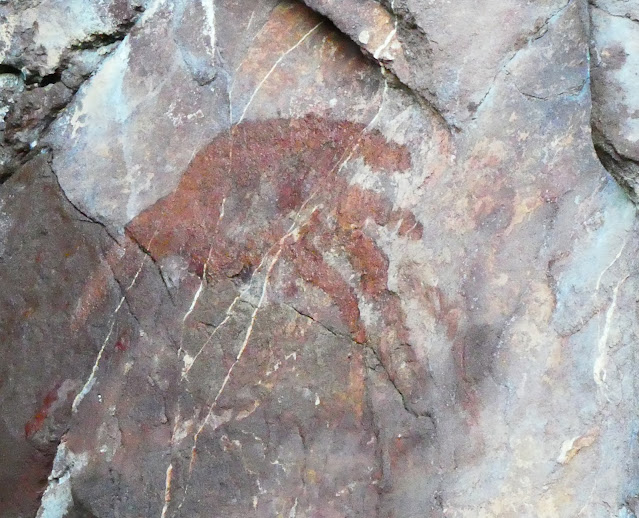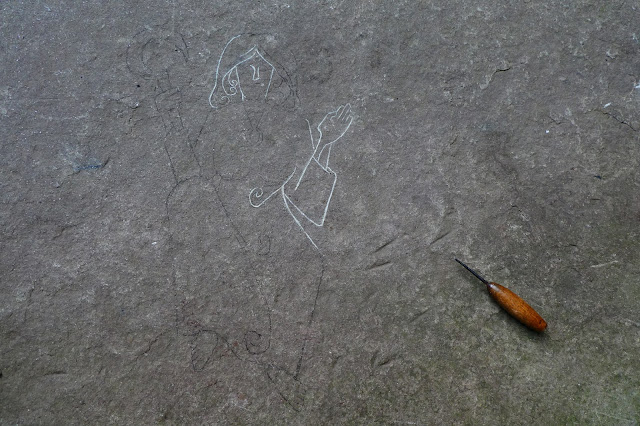Language and Linguistics
As language is the main medium of this project, I expect this section will expand rapidly – both in terms of the real-world linguistics (and proto-linguistics) involved, as well as the fictional languages.
The Languages of the World of Gyldland
That the Ulfish, in their relative isolation have seen less linguistic dilution than the other races, may be seen in the few specific words which are glossed in the main text: delgr mentioned elsewhere but also Drekkh-okhr (literally, ‘serpent-eyes’ - crystalline stones used for scrying by Ulfish druids) – see Pokornoy. Drekkh < PIE *derkh+okhr < PIE *ok = eye (> Gk. ‘ocular’). This clear relation to the ancient Serpent-tongue (the “speech of wyrms, when the worlds were young”) can be seen in Sigfri’s climactic confrontation with Skróth, when he yells at the dragon in his ancient, native tongue: “Derkh! Paus-yū dheghom, khuaz h’meg widē... lith egh weid estu hnemn.”
Elsewhere in the text, the word for ‘dragon’ as uttered by any other character is ‘wyrm’ or occasionally ‘linn-wyrm’, almost never ‘dragon’ or ‘drake’ - the latter being Graeco-Latin loan-words into Germanic languages, which I have strived to avoid at all costs throughout the text, except where certain well-read characters seek to show off their learning. While ‘dragon’ specified a certain type of creature, wyrm in Old English was shadowy, and fluttered around between an earthworm (or, try a leafwyrm – caterpillar, lit. ‘leaf-worm’) to a snake, to a dragon itself1. In this way the connection to real-world historical taxonomy is maintained, and keeps the visual and apparent relationship between snakes (little dragons) and dragons (epic snakes) intact.
1This ambiguity is played with poetically in the famous OE riddle in the Exeter Book, of the ‘book-moth’ wherein ‘se wyrm forswealg...’ While in actuality a mere moth has gnawed through the page, the imagery inherent in ‘the wyrm swallowed...’ also hints at a ravening creature, the like of which ended the career of that veteran monster-slayer, Beowulf. The moth/bookworm in the riddle is specifically alluded to in an aside, following the dark fate of Bjargor and Larath (who is gruesomely chewed by Skróth during the razing of Tarndell): “For Skróth Wastelander, onetime wyrm-smith, golden-gazed pattern-welder, for all the life and beauty he’d fired, and wolfed, was none the fairer for any of it.”
The Languages of the World of Gyldland
That the Ulfish, in their relative isolation have seen less linguistic dilution than the other races, may be seen in the few specific words which are glossed in the main text: delgr mentioned elsewhere but also Drekkh-okhr (literally, ‘serpent-eyes’ - crystalline stones used for scrying by Ulfish druids) – see Pokornoy. Drekkh < PIE *derkh+okhr < PIE *ok = eye (> Gk. ‘ocular’). This clear relation to the ancient Serpent-tongue (the “speech of wyrms, when the worlds were young”) can be seen in Sigfri’s climactic confrontation with Skróth, when he yells at the dragon in his ancient, native tongue: “Derkh! Paus-yū dheghom, khuaz h’meg widē... lith egh weid estu hnemn.”
Elsewhere in the text, the word for ‘dragon’ as uttered by any other character is ‘wyrm’ or occasionally ‘linn-wyrm’, almost never ‘dragon’ or ‘drake’ - the latter being Graeco-Latin loan-words into Germanic languages, which I have strived to avoid at all costs throughout the text, except where certain well-read characters seek to show off their learning. While ‘dragon’ specified a certain type of creature, wyrm in Old English was shadowy, and fluttered around between an earthworm (or, try a leafwyrm – caterpillar, lit. ‘leaf-worm’) to a snake, to a dragon itself1. In this way the connection to real-world historical taxonomy is maintained, and keeps the visual and apparent relationship between snakes (little dragons) and dragons (epic snakes) intact.
1This ambiguity is played with poetically in the famous OE riddle in the Exeter Book, of the ‘book-moth’ wherein ‘se wyrm forswealg...’ While in actuality a mere moth has gnawed through the page, the imagery inherent in ‘the wyrm swallowed...’ also hints at a ravening creature, the like of which ended the career of that veteran monster-slayer, Beowulf. The moth/bookworm in the riddle is specifically alluded to in an aside, following the dark fate of Bjargor and Larath (who is gruesomely chewed by Skróth during the razing of Tarndell): “For Skróth Wastelander, onetime wyrm-smith, golden-gazed pattern-welder, for all the life and beauty he’d fired, and wolfed, was none the fairer for any of it.”


Comments
Post a Comment